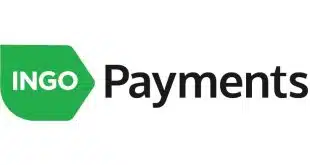Early adopters in the consumer remote deposit capture market say their services are a hit with customers, but they also say they are able to keep risk under control as remote deposit for smart phones seems poised to hit the big time.
“It’s actually something that’s been very, very successful in terms of customer acceptance,” Craig Roy, senior vice president at Marlborough, Mass.-based Digital Federal Credit Union (DCU), tells Digital Transactions magazine for an upcoming story about consumer remote deposit capture. In the mobile version, users snap pictures of the front and back of a check with their smart phone and then upload the images through their online-banking application for deposit to their checking or savings account.
DCU introduced its mobile service, called Mobile PC Deposit, in April. About 20,000 members have enabled their smart phones to use the new service, Roy says. The credit union offers free downloads for the service for Apple Inc.’s iPhone and smart phones running on Google Inc.’s Android operating system.
DCU launched its home-based PC Deposit service in March 2008. At home, consumers use common document scanners linked to their personal or laptop computers to take images of checks and send them to their banks through online-banking Web sites. Based on usage for the past eight months, DCU is getting about 25,000 deposits per month through consumer capture with a total value of $21 million, averaging $840 per deposit. The 360,000-member credit union has a national customer base although most members live in Massachusetts and New Hampshire. Vertifi Software LLC, a subsidiary of Eastern Corporate Federal Credit Union, developed DCU’s mobile-capture apps.
This summer, State Farm Bank, a unit of Bloomington, Ill.-based insurance giant State Farm, introduced a new version of its Pocket Agent application for the iPhone that includes mobile capture. From July 23 through Aug. 27, 577 bank customers deposited $400,000, says Andrea O’Connor, vice president and chief deposits officer. According to O’Connor, customers have had “minimal” problems using the application. “There is not a hesitancy, they don’t have concerns,” she says. State Farm developed the Pocket Agent app itself, but used an undisclosed third-party provider to add the mobile-capture capabilities.
The acknowledged leader in consumer capture is San Antonio, Texas-based USAA Federal Savings Bank, which launched its Deposit@Home service in 2007 and in August 2009 introduced mobile capture. In July, USAA reported that after less than a year, its Deposit@Mobile service “exceeds all expectations” and had taken in 1.5 million checks worth a total of $928 million. USAA, which has a widely dispersed customer base of 5 million military personnel and their families, says it is now getting 35% of its deposited checks through remote deposit capture.
Mobile capture is still the domain of a handful of pioneers, but it is likely on the cusp of a boom. The big processor Fiserv Inc. is now making the service available to about 4,000 financial-institution customers, and one of the nation’s largest banks, JPMorgan Chase & Co. is heavily promoting its new mobile-capture service (Digital Transactions News, Aug. 25 and July 6, respectively).
While consumer capture carries a risk of fraud, banks and credit unions mitigate it through policies that limit transaction volumes and deposit amounts and by building fraud-prevention capabilities into their operating systems. State Farm uses the Qualifile decisioning service from Fidelity National Information Services Inc. (FIS) to assess deposit risk, and it looks at customer behavior to determine who can use mobile capture. O’Connor says the “vast majority” of bank customers qualify for the service.
At DCU, “Pretty much all members are eligible; we do mitigate risk by using certain criteria to establish daily and monthly deposit limits,” says Roy. A member’s relationship with the credit union, his or her credit score, and “other factors” determine eligibility or ineligibility for consumer capture, he adds.







